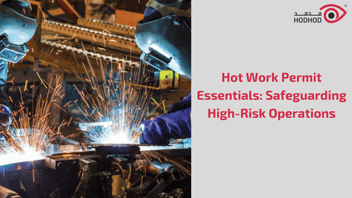Hard Hats to AI: Transformative Journey of Workplace Safety
Explore the transformative journey of workplace safety from the Industrial Revolution to Industry 4.0, and embrace the future of safer work environments.
Introduction
The history of workplace safety is a dynamic story of evolution and change. It's a story that reflects our growing understanding of the hazards faced by workers, advancements in technology, and shifts in societal attitudes towards labor rights. From the rudimentary safety measures of the Industrial Revolution to the digital safety solutions of today, let's take a journey through time to see how workplace safety has transformed.
The Early Years: Industrial Revolution and the Dawn of Safety
The Industrial Revolution in the late 18th and early 19th centuries marked the beginning of the modern concept of workplace safety. As people moved from farms to factories, the risks associated with work increased significantly. Initial safety measures were reactive and rudimentary, often focusing on immediate physical hazards. Safety was largely considered the worker's responsibility, with little to no regulatory oversight.
20th Century: The Birth of Safety Regulations
The 20th century brought about a significant shift in attitudes towards workplace safety. The horrific Triangle Shirtwaist Factory fire in 1911, which led to the death of 146 garment workers, served as a stark reminder of the dire need for safety regulations. This event, among others, triggered the establishment of regulatory bodies and standards, such as the Occupational Safety and Health Administration (OSHA) in the United States. The focus began to shift towards prevention rather than reaction, with a growing emphasis on training, safety equipment, and the systematic management of safety.
The Digital Age: Safety in the Era of Industry 4.0
Today, we are in the age of digital transformation, an era often referred to as Industry 4.0. This has had a profound impact on how we approach workplace safety. The rise of technologies such as artificial intelligence (AI), the Internet of Things (IoT), real-time monitoring , and data analytics has revolutionized how organizations identify, mitigate, and prevent workplace hazards.
IoT and Real-time Monitoring: The Internet of Things enables the interconnection of various devices and equipment within the workplace, allowing for real-time monitoring of safety parameters. This continuous flow of data allows organizations to proactively identify potential hazards and take corrective actions before incidents occur.
Artificial Intelligence and Machine Learning: AI and machine learning have the potential to significantly improve safety prediction and risk assessment. By analyzing vast amounts of data from multiple sources, these technologies can identify patterns and trends that might not be evident to the human eye, helping to prevent accidents and improve safety protocols.
Digital Safety Management Systems: The digitalization of safety management systems has made it easier for organizations to track, analyze, and report safety incidents. Cloud-based solutions allow for seamless collaboration between departments and stakeholders, ensuring that safety remains a top priority across the entire organization.
Virtual Reality and Safety Training: Virtual reality (VR) offers a unique, immersive training experience that allows workers to practice safety procedures in a controlled environment. This technology can help workers to better understand and respond to potential hazards, increasing overall safety awareness.
Conclusion
The evolution of workplace safety is an ongoing process, driven by the continuous development of new technologies and advancements in our understanding of workplace hazards. As we look to the future, it is crucial that organizations continue to prioritize safety and invest in cutting-edge technologies to create safer working environments for all.
Embrace the future of workplace safety and learn more about the cutting-edge safety solutions at https://hodhod.io/
.png)


